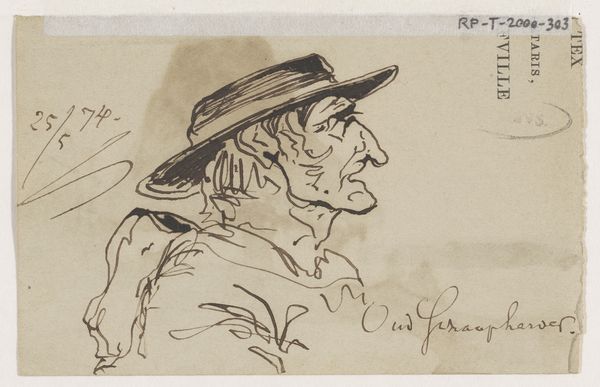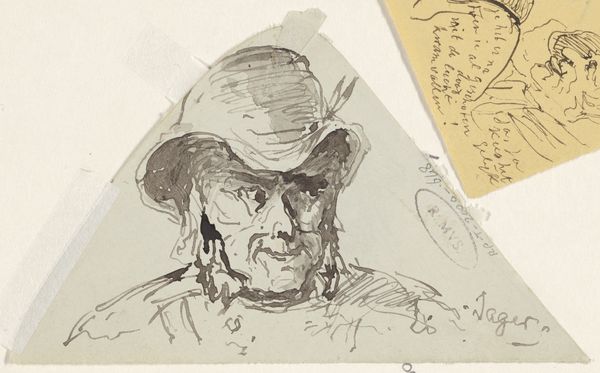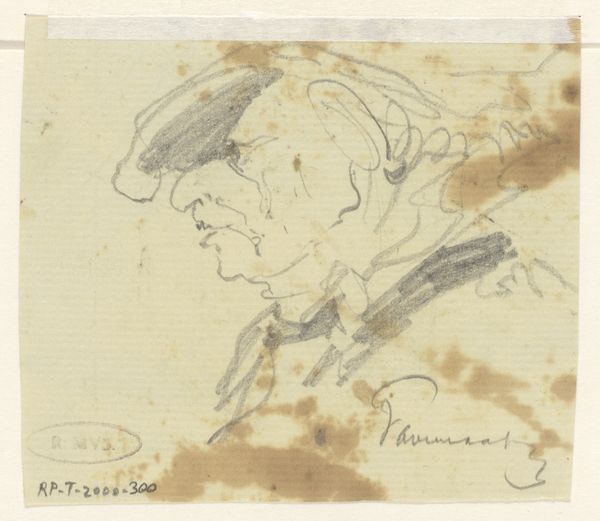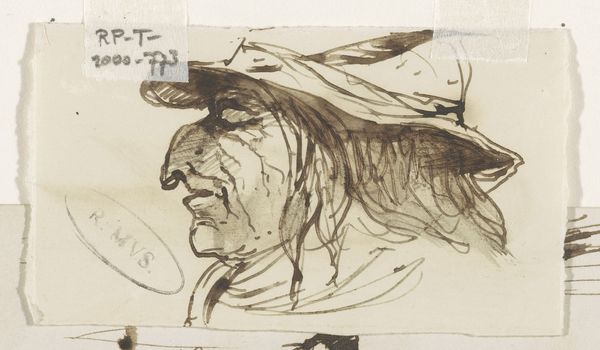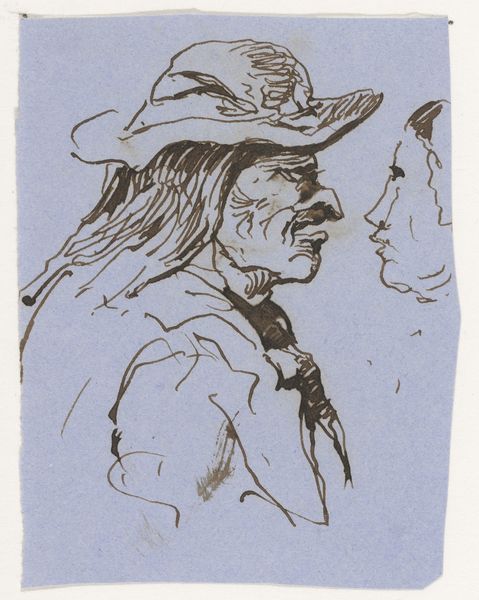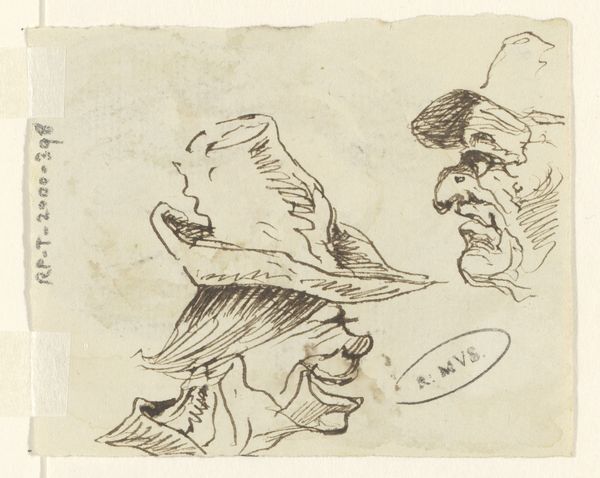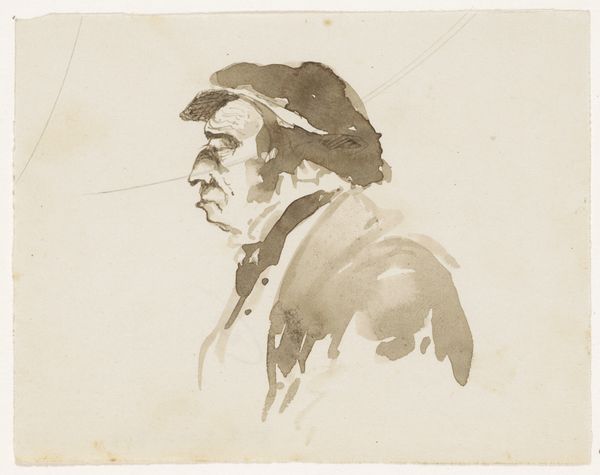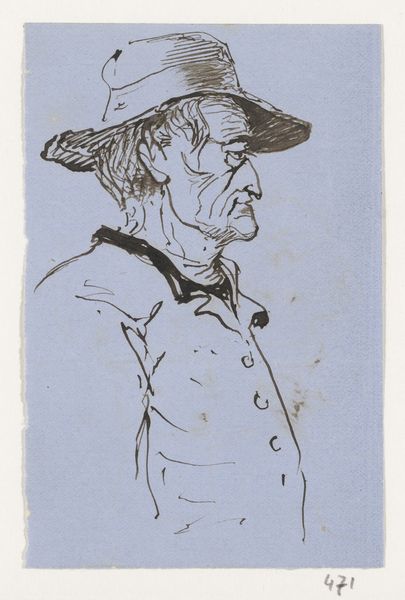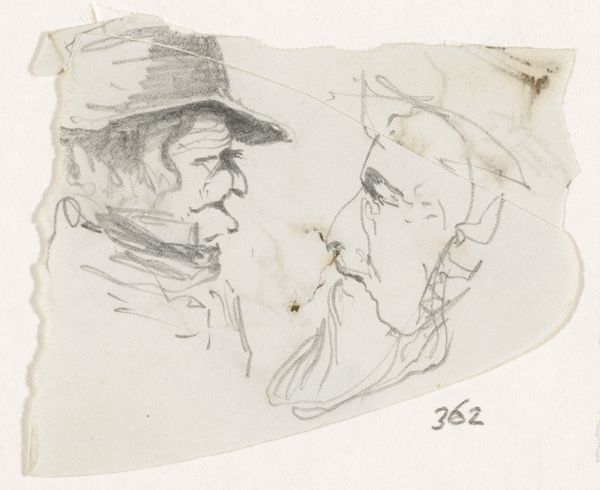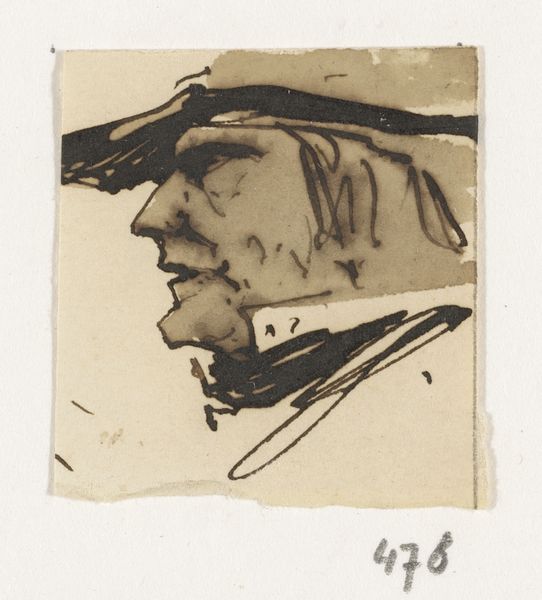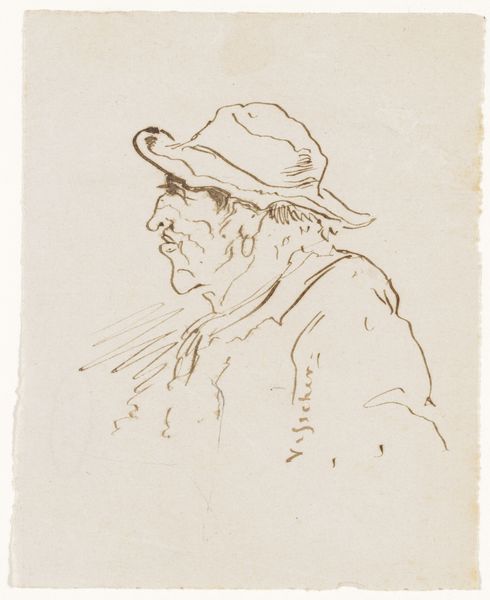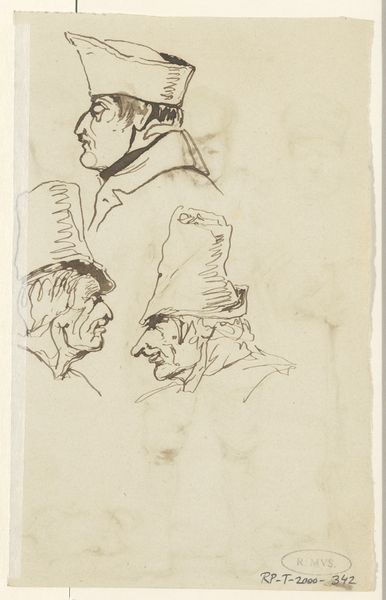
drawing, ink, pen
#
portrait
#
drawing
#
pen sketch
#
ink
#
pen
#
academic-art
#
realism
Dimensions: height 59 mm, width 80 mm
Copyright: Rijks Museum: Open Domain
Curator: What a stark image. The rough, almost hurried lines give it a sense of melancholy. Editor: Indeed. We're looking at "Kop," a drawing attributed to Johannes Tavenraat, likely created between 1840 and 1880. It's rendered in ink and pen, a study of a head, currently residing here at the Rijksmuseum. Curator: Tavenraat's choice of medium, just ink and pen, it's telling, right? It limits color, emphasizing form, and line, directing our focus. You can practically feel the weight of this man's lived experiences etched into his features. How does such austerity fit into the broader sociopolitical frame? What kind of commentary could this be making? Editor: The strokes do seem to define and almost judge the man's contours and physiognomy. Think about the historical moment; the ascendance of photography also elevated the human subject in other visual media, and such realist attention—honing in on distinct visual features, using light and shadow with striking effect, especially as seen with the man’s hollow cheek—feels like the core pursuit. Curator: True. But I can't help wondering about representation, especially of working-class individuals. Tavenraat’s meticulous rendering of his weathered face feels… loaded. Is it empathetic observation, or something more problematic? The image gives rise to so many thoughts on how power and privilege dictate how lives are viewed and depicted. Editor: The drawing also strikes me for its efficiency and dynamism. See how Tavenraat suggests volume and light with only a few precisely placed strokes. Notice, also, how economical the depiction of the man's hat is. With the quick curves he provides all the information we need. It's art distilled. Curator: A sharp eye for visual form and a knack for capturing emotion— it’s a provocative piece that definitely transcends simple visual appeal, don't you think? Editor: Absolutely, and by concentrating on the basic elements of art like light and lines, and in understanding the drawing's original aims, we discover a more genuine meaning.
Comments
No comments
Be the first to comment and join the conversation on the ultimate creative platform.
